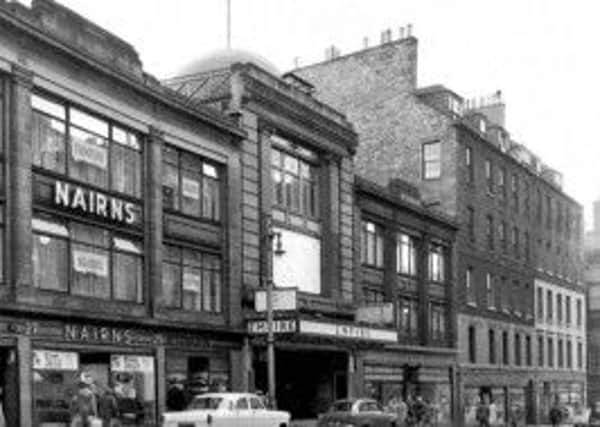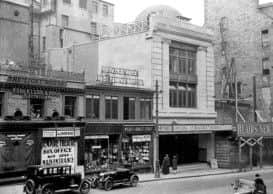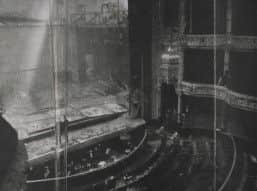Lost Edinburgh: The Empire Theatre


A theatre has stood adjacent to the Surgeon’s Hall on Nicolson Street since the 1820s making it the longest continuous theatre site in Edinburgh. Today we know it as the Edinburgh Festival Theatre, though the intervening 190 years have witnessed a series of theatres and music halls come and go with names as diverse as Ducrow’s Circus, Pablo Fanque’s Amphitheatre, Dunedin Hall, Southminster Theatre, Queen’s Theatre and Newsome’s Circus. The latter three consumed by fires in 1875, 1877 and 1887 respectively. From 1896 until 1963 the theatre was best known as the Empire.
Residents of Edinburgh’s Southside had something to shout about on the 7th of November 1892 when the majestic Empire Palace Theatre first raised its curtain. It was the first of the famous Moss Empires’ chain of super theatres which would go on to feature heavily across the United Kingdom.
Advertisement
Hide AdThe Empire proved to be extremely popular during its initial years and soon began to attract a wide selection of the very best-known performers and variety shows of the day. The very first moving pictures ever seen in Scotland were shown courtesy of the Lumiere Brothers at the Empire in 1896.


The Great Lafayette
On a fateful day in May 1911 however, tragedy struck. World renowned illusionist and magician extraordinaire The Great Lafayette had opened a two week season at the Empire Palace Theatre on May 1st. Lafayette, whose real name was Sigmund Neuberger, was arguably the most illustrious and famous entertainer to have appeared at the Empire up until that point and was certainly one of the best paid of the era. Lafayette reportedly earned over £350 a week – a staggering sum of money in 1911 and still a healthy salary 112 years later. On Tuesday the 9th of May over 3000 spectators had filled the Empire to witness The Great Lafayette put on a spellbinding show packed full of logic-defying magic tricks and daring stunts. As The Great Lafayette took his bow a lamp fell towards the scenery which immediately set the stage area ablaze. The show’s finale the ‘Lion’s Bride’ featured an elaborately decorated set which used tapestries, cushions, tents and curtains in order to create an Oriental feel. It provided the perfect fuel for the fire. The audience, by now conditioned to witnessing peculiar stage effects, were slow to vacate the premises as the first flames flickered. All paying customers eventually made it safely out of the venue after the fire curtain was lowered. Sadly, the same could not be said for several of the performers and backstage staff including The Great Lafayette who had been trapped behind the curtain. In all, eleven people perished that day in what ranks as one of the most terrible and costly fires that the city is ever likely to experience. The famous magician’s ashes were interred at Piershill Cemetery along with Beauty, his beloved dog who had been a gift from the famous escape artist Harry Houdini. A quarter of a million people lined the streets of Edinburgh to mark his untimely passing.
Recovery
Needless to say, the 1911 inferno was a terrible blow to the fortunes of the Empire Palace Theatre. Interestingly, the first ever Royal Variety Performance had been scheduled at the Empire to celebrate the coronation of George V but was instead shifted to London. The theatre was swiftly reopened within a matter of months but took a long time to fully recover and attract the level of performer that it had become accustomed to. In time globally-revered performers and entertainers including ballerina Anna Pavlova, impersonator Vesta Tilley and comic actors Charlie Chaplin and Laurel & Hardy would go on to grace the stage of the Empire. In September 1927 the theatre closed for a year while reconstruction took place. The auditorium was fully renovated, a brand new Art Deco façade put in place and the word ‘Palace’ dropped from the name. Established theatre architects W & TR Milburn were responsible for the design of the new Empire which was widely considered to be among their best work. From 1928 until 1963 the theatre featured an eclectic selection of variety performances, musicals, operas and ice shows.


On March 5th 1963, the Empire’s 70 year history as a theatre came to an end when it was converted into a bingo hall. With more than 25,000 members, far exceeding the capacity of the hall, the New Empire Casino was one of the most popular places to spend a Saturday evening in the city.
Since June 1994 the Empire name was let go altogether to become the Edinburgh Festival Theatre. The old façade was exchanged for a strikingly modern glass-fronted design with many of the grand features within, such as the exquisite auditorium, retained and embellished. The Festival Theatre is active all year round and is one of the busiest venues in the city. It offers Edinburgh’s premier dance and opera house as well as playing host to the occasional large-scale music event. Despite all the changes over the years, the events of the 9th of May 1911 and the death of The Great Lafayette continue to loom large over its history and backstage tours are available to those who wish to find out a little more.